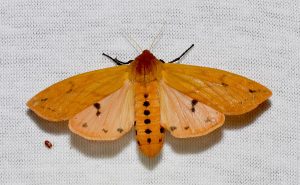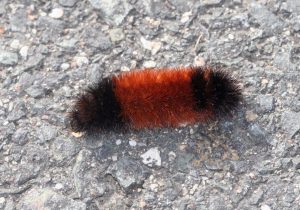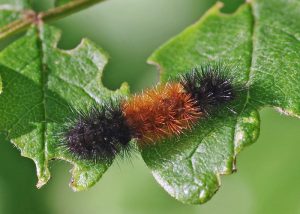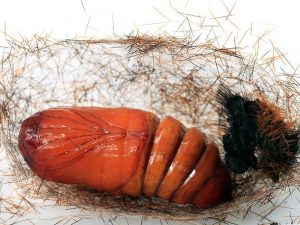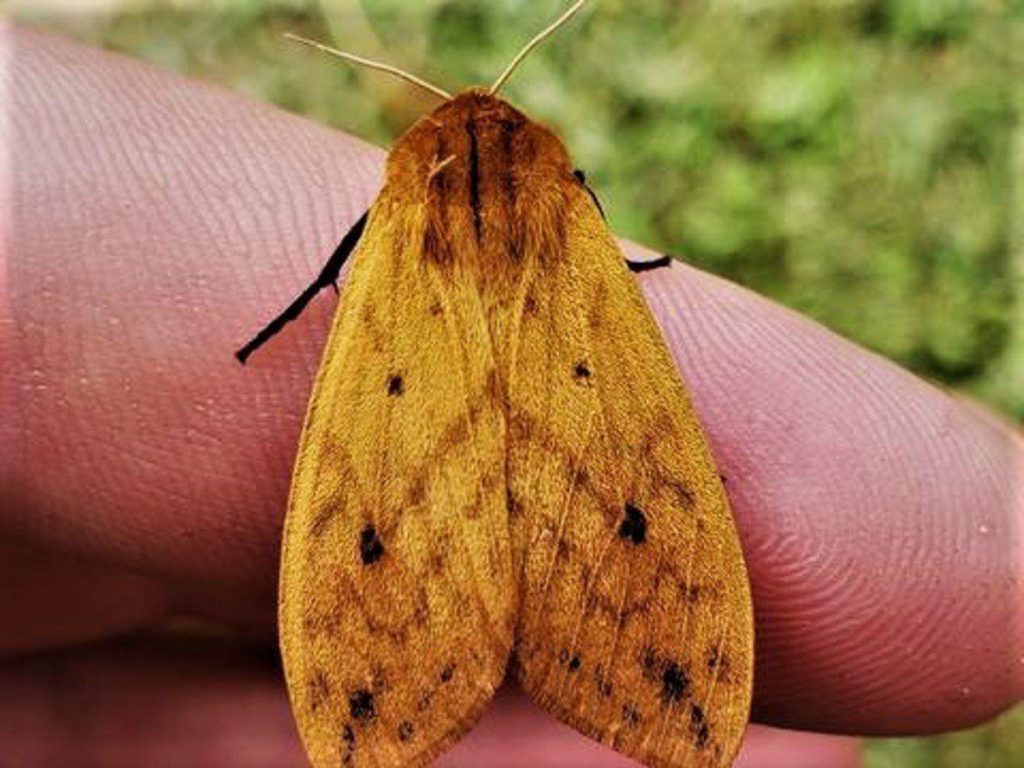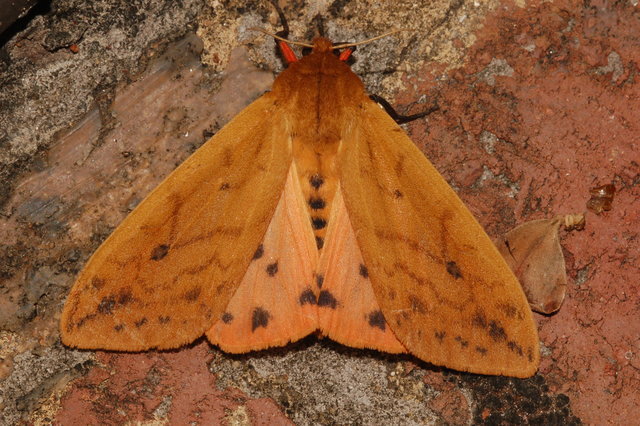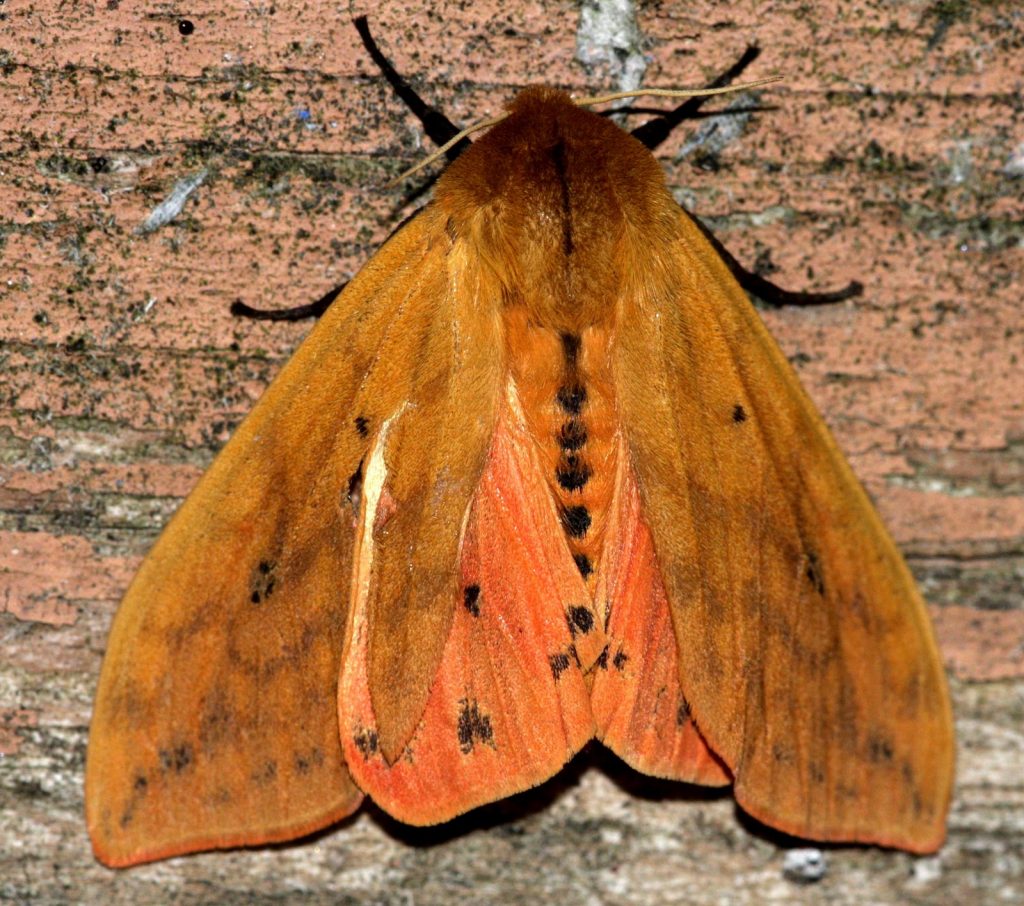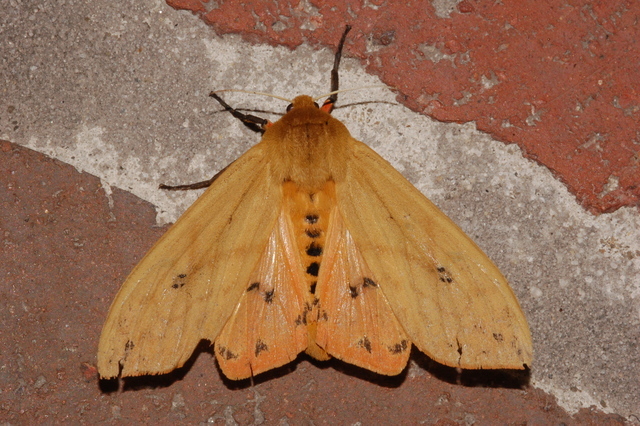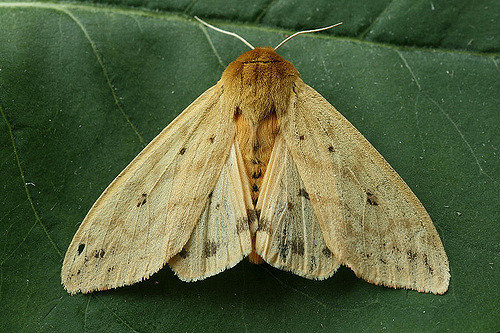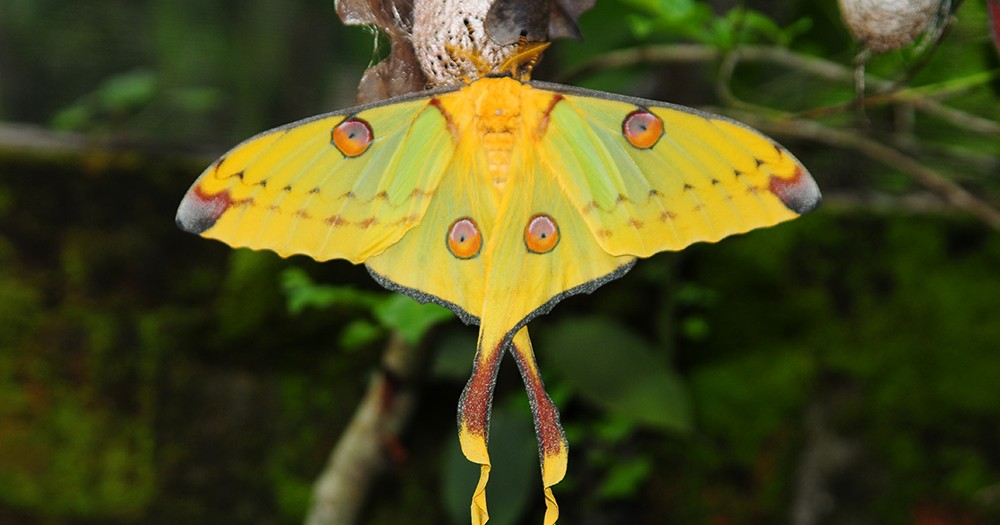Isabella Tiger Moth/Woolly Bear (Pyrrharctia Isabella)
Isabella tiger moth of the Erebidae family is indigenous to the United States and parts of southern Canada. They are even called woolly worm, woolly bear, and banded woolly bear in their larval form.
en.wikipedia.org
Scientific Classification
- Family: Erebidae
- Genus: Pyrrharctia
- Scientific Name: Pyrrharctia Isabella
Description and Identification
Caterpillar
The larvae have a hairy, woolly, fuzzy appearance because of the dense and stiff hair covering their body, earning them the name woolly worm or woolly bear. The middle part of their body is covered with reddish or reddish-brown hair resembling bands or stripes, while tufts of black hair occupy the anterior and posterior regions.
It is advisable for humans not to touch the larvae as their stingy hairs might lead to a skin infection. Yet, they are not venomous and do not result in any skin inflammation and irritation. Upon getting disturbed, they roll into a ball and crawl away quickly.
Adult Moth
Sexual Dimorphism: Present
The females appear larger than their male counterparts, while there is also a difference in coloration in their wings.
Color and Appearance
Forewings: When opened, they are tan or yellow with black spots and faint lines all over. When closed, it has the same yellow color and spotted appearance.
Hindwings: When opened, it appears a shade lighter than the forewings, with the color pattern varying in males and females. When closed, there is no significant change in the wing color and pattern.
While males have a yellowish-orange hind wing with black spots on the outer margin, it appears pinkish in females.
Their abdomen’s color matches that of the wings, while they also have reddish-orange forelegs.
Average Wingspan: 3.7 – 5 cm (1.45 – 1.96 cm)
Flight Pattern: Erratic in a spiral and zigzag
Season: April – September
Eggs
The tiny eggs have a yellowish-green coloration that hatches in fall.
Quick Facts
| Other Names | Woolly worm, woolly bear, banded woolly bear (names of the larvae) |
| Distribution | Throughout the United States except for Hawaii and Alaska |
| Habitat | Mostly in and around areas where their host plants grow |
| Predators | Parasitic wasps, flies, birds, mantids |
| Lifespan of Adults | 1 – 2 week |
| Host plants | Aster, clover, birch, maple, elm, sunflower, corn |
| Adult diet | Nectar of their host plants |
Did You Know
- English botanist Sir James Edward Smith named this moth species for the first time in 1797.
- Canadian folklore has it that the moth’s caterpillar served as great predictors of winter, all depending on their hair’s length and coloration. Some believed that if their brown bands appeared wide, the winter would be mild, while narrow bands were symbolic of a harsh winter. Similarly, long dark hairs were also indicative of a severe cold season ahead.
- Woolly Worm Festival, celebrated in October every year, particularly in North Carolina, Ohio, and Kentucky, celebrates the woolly bear’s weather-predicting abilities.
Scientific Classification
- Family: Erebidae
- Genus: Pyrrharctia
- Scientific Name: Pyrrharctia Isabella

